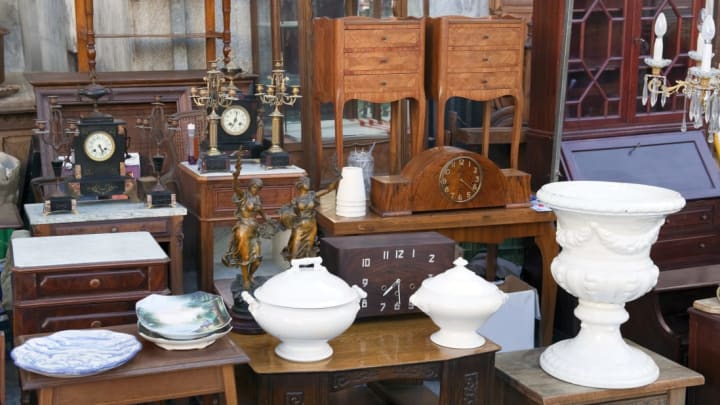Every time you watch Antiques Roadshow, you probably wonder: Just how do we know what items are antiques?
The rule of thumb used by most antique dealers is that anything about 100 years or older is an antique. Items that are old, but not quite that old, are called vintage. In 1930, the U.S. government put a tax law into effect stating that an item was to be considered antique if made before 1830, about the time the Era of Mass Production began. According to this law, antiques are "works of art (except rugs and carpets made after the year 1700), collections in illustration of the progress of the arts, works in bronze, marble, terra cotta, parian, pottery or porcelain, artistic antiquities and objects of ornamental character or educational value which shall have been produced prior to the year 1830." Antique items are not taxed, so in 1966, the 100-year standard was adopted to keep people from claiming things as antiques that actually weren't.
In 1996, the tax law was revised to read that “if the essential character is changed, or more than 50 percent of the item has been repaired or restored, the item is no longer considered an antique and is subject to duty.” An exception to this rule is cars and other items that are subject to frequent wear—they can be called antique when they are over 25 years old.
Not all dealers use this 100-year rule. Some will call an antique anything between 80 and 100 years old, and others still use the 1830 guideline. There are also some who, for the sake of simplicity, don’t use the term antique at all and refer to everything as either vintage or collectable.
